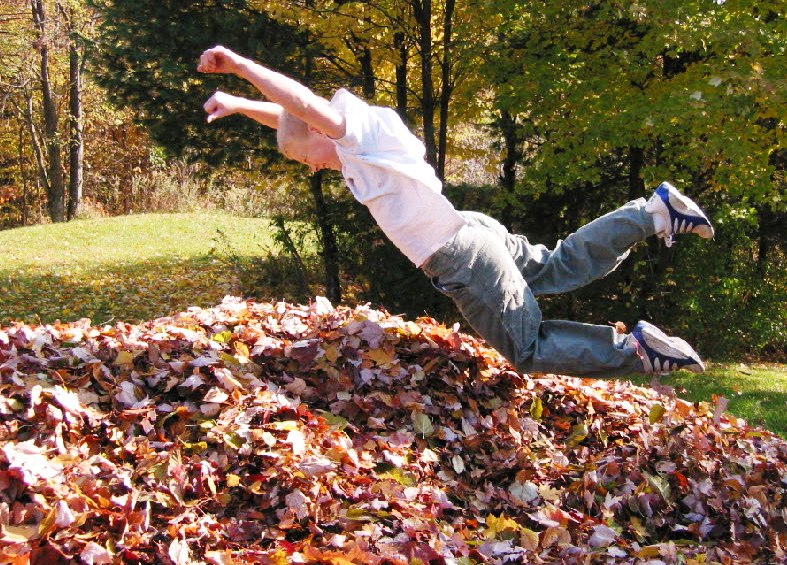
If there is one thing that bothers me more than seeing Christmas advertised in late September, it is hearing leaf blowers being unleashed by their owners in early October.
I know I am sounding like a Luddite, eco-friendly Victor Meldrew. If you have ever been savouring the colours and crispness of an autumn morning only to have your inner Zen shattered by a demented, over-sized hair-dryer you will know what I mean.
The fact is that sodden leaves are rarely shifted by home-owned leaf blowers, so doing the job by hand will save a trip to the gym, build up your upper body strength and save money.
It will also be kinder to everyone within 100 meters trying to enjoy their weekend, especially neurotic garden designers. Still, toys will be toys.
So, having had my moan - what does one do with the leaves and what other tasks are there to see to?
- Leave the leaves if you can. They are a natural layer of insulation for over-wintering plants and will add organic matter to the borders. On lawns, driveways, paths and in ponds they are not good news so spread them over the borders or onto the compost. By adding a few inches of soil to the compost every foot or so (300mm), the leaves will break down faster and become the dark 'humus' that is so good for the garden.
- There is still time to make repairs to the lawn but aim to make your last cut this month leaving the grass no shorter than an inch (25mm). If your lawn has become full of thatch you can scarify it by using a soft-prong rake to scratch out the dead grass.
- Lawn feed can be applied but make sure it is the autumn lawn feed as it will have less nitrogen.
- Trees, shrubs, hedging can be moved as their growing processes have slowed down but the soil is still warm so any damage can be kept to a minimum.
- Herbaceous plants are best divided and moved at this time of year. Cut down the plants that are over but leave those with seed heads so the birds can eat them to build up their winter reserves.
- Prune your climbing roses by cutting back all stems just enough to prevent them shaking about too much in the winter weather. Tie in loose shoots or cut them back so they are not looking too wild. The main prune can be in a few months time.
- With the inevitable wet coming, try to avoid your patio pots and containers becoming water-logged. A tile or two, a clay "foot" or a few bricks will raise them enough to provide some airflow underneath.
- Check tree ties and stakes before the windy weather sets in.
- Move your tender plants into the greenhouse or cover them with a fleece.
- And finally: Christmas begins on 25th December. The run up to that is Advent ( read:'waiting').
The fun part this month comes when you have the bonfire to burn all those diseased leaves and branches. Check the wind direction first to see that the neighbours don't have all their washing hanging out for you to smoke.
On the other hand, if they have the leaf blower going...

